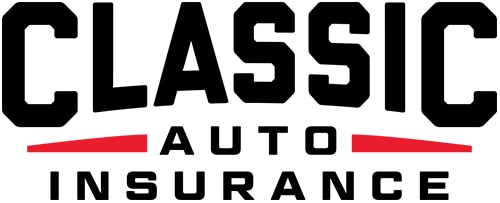Jaguar is known for being one of the most luxurious car makers in the world. It’s also without question one of the coolest car brands in the world, frequently spotted in movies like the James Bond series of films, music videos and more. Truly, there’s nothing quite like a Jaguar.
But how did this classic, elegant brand of car come to be?
Here’s a deep dive into the history of the Jaguar and how the 1922 Swallow Sidecar Company became the monolithic figure in the automobile industry that it is today.
The Swallow Sidecar Company
In 1922, two friends joined together to form a new company. William Walmsley and William Lyons were young, just 30 and 20 respectively, when they founded the Swallow Sidecar Company in Blackpool, England.
Walmsley started by building sidecars for reconditioned motorcycles, and Lyons was hard at work as his apprentice. Commercial demand for these sidecars was increasing, so the two took out a loan—with their fathers signing as the guarantors—hired a few more employees, and began working.
As the decade progressed, Walmsley and Lyons turned their attention to a more lucrative line of work within the automotive industry: coachbuilding. They wanted to take an Austin 7 chassis and build a body atop it. The problem was that anyone wanting to build from an Austin 7 chassis needed approval from the Austin company before starting construction. This would be hard to get as an up-and-coming company. They wouldn’t be able to get approval as an emerging name.
The solution to this problem was to have one of the salesmen within the company convince a dealership in Bolton to give them an Austin 7 chassis—under the counter—so they could get started. Lyons drafted a design, then commissioned Cyril Holland, an experienced coachbuilder, to begin work on the body.
Once they completed the coach, they presented it to Austin. The company was impressed with the coach, which came with two seats, a removable hardtop, and a sleek body and style. Austin approved the car, made a few small changes to the paint and style of the car, and sold the car at a £175 price point. Even during the Great Depression, this made the car a quick sell. The Austin Swallow Seven was a smashing success.
The Very First Sports Car
The coach that the Swallow Sidecar Company built in tandem with the Austin 7 chassis was the very first in the SS line. It was also the first real sports car. In 1931, the Swallow Sidecar Company, now called SS Cars Ltd., partnered with the Standard Motor Company to work on its first car, the SS1. This two-door sports car was shown to the public at the 1931 London Motor Show.
At the onset of World War II, SS Cars Ltd. began building sidecars again, this time for the military. It also produced its first sports car since the SS1, the beloved XK120. This was an open two-seater, twin-cam, straight-six engine car with a handbuilt aluminum body.
Following World War II, SS Cars wanted to avoid any incorrect association with the SS troops who fought for Nazi Germany, so it changed its name to Jaguar Cars Ltd. It also purchased the Standard Motor Company so it could begin its work on high-performance engines.
With these new, high-powered engines, Jaguar released the XK140, which was not only roomier than the XK120 but had upgraded brakes and rack and pinion steering. It also increased the suspension and was available in an open seater and drophead version.
Following the War
While there was plenty of demand for Jaguar’s new cars and everything else after the war, there was a lack of materials, making it hard for Jaguar to keep up with the demand. All this did, though, was turn into the Jaguar XK120. This car was built from aluminum and wood—the only materials readily available—but it actually turned the car into the fastest production car in the world when it was released in 1948.
Now knighted, Sir William Lyons was focusing on providing exceptional value for money. This is what made Jaguar so famous—it was making the best sports cars while also offering luxury sedans like the Mark II, which were much more affordable compared to other similar cars.
The XK Series was making an important mark on racetracks everywhere, breaking all kinds of records, winning major racing victories in 1951 and 1953. After the release of the D-Type vehicle, also referred to as the aircraft on wheels, Jaguar again claimed notable racing victories in 1955, 1956 and 1957.
Making Advancements
In 1957, the Jaguar released a completely new vehicle, the XK150. It wasn’t anything like the XK120 or the XK140. This new vehicle had been completely redesigned, replacing the split windshield with a one-piece windscreen and minimal rear seats. It also eliminated the full weather equipment.
These shifts in design helped keep Jaguar’s cars lower in price than any of its competition, an important step in solidifying its name as an important international motorsports brand. Jaguar was a global name.
This paved the way for Jaguar’s most famous car: the 1961 E-Type. The car was an instant sensation when it debuted at the Geneva Auto Show in March 1961. It was a veritable record-breaker, capable of reaching 150 miles an hour, with a sleek, stunning body. It sported an overhead cam engine, four-wheel disc brakes and an independent rear suspension.
The E-Type Series was truly unlike anything the luxury automotive industry had ever seen before.
Trouble Ahead
In 1965, the British Motor Company bought out Pressed Steel Limited—the company that supplied all the material Jaguar used to build its cars. Lyons was understandably concerned about the problems this would cause for Jaguar’s supply chain. For this reason, Jaguar merged with the British Motor Company, becoming British Motor Holdings Ltd. Things truly came full circle, as the British Motor Company was a company that formed with the merger of Austin and Morris—Austin being the very first chassis that the Swallow Sidecar company used to construct its premier coach.
It wasn’t a great time for Jaguar. There were a lot of uncertainties.
The merger of Jaguar and the British Motor Company didn’t go well. By 1975, the companies separated, and Jaguar became a public company, running into major financial difficulties. Because it lost its supplier, the overall quality and features of its vehicles suffered. It wasn’t as competitive as it had been in years past.
Sir William Lyons retired, and Sir John Egan became the CEO in 1984. He made the difficult decision to lay off more than 10,000 employees to cut costs and keep the company going, but this only delayed further problems. In 1989, the company was in trouble again until Ford Motors offered to buy Jaguar.
A New Start
Jaguar accepted Ford’s offer, and the company became part of Ford Motors as part of its quest to form the Premier Automotive Group, including Volvo, Land Rover and Aston Martin. Ford further combined Jaguar and Land Rover to form Jaguar Land Rover. Then, in 2009, Ford sold Jaguar Land Rover to Tata Motors.
While the company is now owned by an Indian company, Jaguar has maintained its home in England. With 10,000 employees and steadily increasing sales, Jaguar is seeing promising growth in North America, Russia and China, again focusing on high-quality materials and incomparable luxury cars.
The Luxury of Jaguar, the Security of Classic Auto Insurance
Owning a Jaguar is like owning a piece of history. Even modern makes deserve precise care and attention.
At Classic Auto Insurance, we’ll help you protect your piece of history with customized classic car insurance coverage.
No two cars are alike, just like no two engines are really alike, which is why our insurance coverage plans are tailored to meet the needs of your specific vehicle. Our plans are as individual as your favorite car so you can enjoy your Jaguar with the right insurance and then pass on the legacy you’ve worked so hard to build.
If your collectible car is old or new, we have the insurance to protect it. We can tailor a policy to fit your needs. We offer affordable Agreed Value coverage for a variety of collector, classic and custom vehicles. Our friendly, knowledgeable staff can answer your questions and give you a quote on the spot.
Call 888-901-1338 or get an instant quote online, and see how we can help safeguard your dream car.





